How to Relieve Heel Pain Fast: 7 Quick Fixes
This morning again, you put your foot on the ground. That searing pain goes through your heel like a lightning bolt.
This dreaded sensation turns your first steps into a real ordeal. You are not alone in this suffering.
Talalgia – the medical term for heel pain – affects 1 in 10 people in the adult population. A statistic that hides thousands of personal stories marked by daily discomfort.
Think of your foot as the architecture of a suspension bridge. The plantar fascia represents the main cable, the fibrous band that connects your heel to your toes. When this cable catches fire, the whole structure wobbles.
Plantar fasciitis remains the leading cause of heel pain. This inflammation of the connective tissue occurs when mechanical stresses exceed the ability of your foot to adapt.
The heel spur, a small bony outgrowth on the calcaneus, sometimes accompanies this clinical picture. Contrary to popular belief, it is not always the direct source of your pain.
But rest assured: this condition is not irreversible. Solutions exist to quickly relieve heel pain and regain your walking comfort quickly.
Some techniques work from the very first applications. Others require the expertise of an experienced podiatry professional.
At the Médecine podiatrique du Plateau clinic, in the urban village of AGORA in Gatineau, we accompany patients on a daily basis towards recovery. Our approach combines immediate solutions with cutting-edge treatments to quickly relieve heel pain.
The winning strategy? Start with at-home relief measures, then move to specialized interventions if necessary.
Why does this pain arise when you wake up?
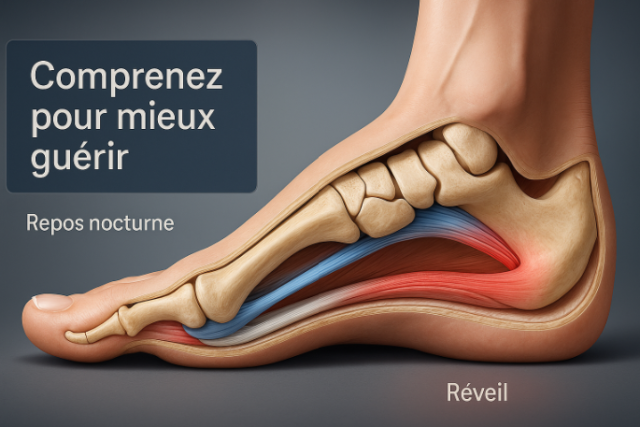
This morning phenomenon hides a fascinating mechanism of biomechanics. While you sleep, your plantar fascia naturally contracts. Like a spring that compresses in the dark.
When you wake up, this shortened fabric undergoes a brutal stretch during the first press. This sudden tension causes micro-tears in the fibers. Hence that feeling of a dagger stuck in your heel.
The process is like an elastic band left in the cold. It becomes rigid and may break if stretched too quickly. Your fascia reacts identically after hours of immobility.
Age amplifies this phenomenon. After the age of 40, your connective tissues gradually lose their natural elasticity. Collagen fibers stiffen and recover less well from daily stresses.
The activity of the previous day directly influences this morning stiffness. A long walk, a running session or a long day on your feet prepare the ground for this nocturnal contraction.
Being overweight is a major aggravating factor. Each additional kilogram multiplies the pressure on your plantar fascia. This additional burden promotes inflammation and delays healing.
Hormonal changes, especially in women, alter ligament flexibility. Menopause can reveal or worsen a previously silent heel pain.
Understanding this mechanism gives you the keys to prevention. Stretching at night and gradually warming up when you get up significantly reduce this characteristic pain.
Ice versus heat: science settles the debate
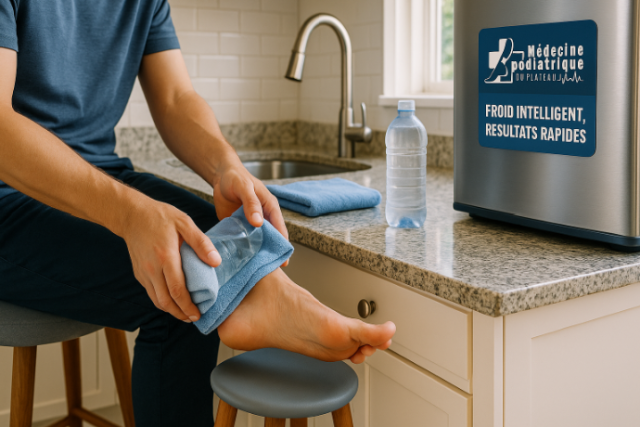
This question has divided patients and therapists for decades. The answer depends entirely on the stage of your pain.
Cryotherapy – application of cold – dominates the acute inflammatory phase. For the first 48 hours, ice acts as a powerful natural anti-inflammatory.
Cold reduces local blood circulation and decreases the release of inflammatory mediators. This action slows down the inflammatory cascade responsible for your pain.
The frozen water bottle technique cleverly combines cold and massage. Dr. Émile Carrier, podiatrist, recommends this approach to his patients on a daily basis.
Roll this bottle under your foot for 10 minutes, three times a day. This movement massages the fascia while providing the desired anti-inflammatory effect.
Caution: never direct ice on the skin. Always wrap it in a thin cloth. Prolonged applications can paradoxically increase inflammation by vascular rebound effect.
Thermotherapy – the application of heat – finds its place in the chronic phase. Usually after a week of evolution, when the acute inflammation subsides.
The heat promotes blood circulation and relaxes muscle tension. It also prepares your tissues for therapeutic stretching.
Alternating hot-cold baths are an advanced technique that is particularly effective. Three minutes in hot water to relax, one minute in cold water to tone.
This alternation stimulates the vascular pump and optimizes metabolic exchanges. This provides your fascia with a healing environment.
Stretches that revolutionize your healing
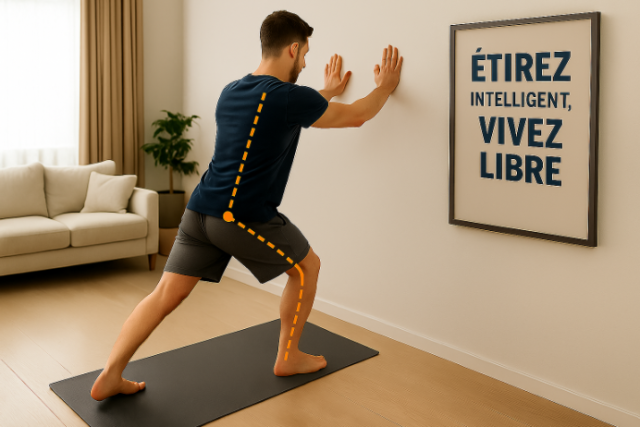
Stretching is the most scientifically documented therapeutic intervention for heel pain. But be careful: the technique determines entirely the effectiveness.
Stretching the calf against the wall is the reference exercise. Stand facing a wall, at a distance from an outstretched arm. Move one foot forward, keeping your back heel on the ground.
This position stretches your calf and Achilles tendon simultaneously. It mechanically reduces the strain on your plantar fascia.
Hold for 30 seconds, release for 30 seconds, repeat three times per leg. Consistency always takes precedence over intensity. It is better to stretch moderately but daily.
Stretching the plantar fascia with a towel targets more specifically the inflamed tissue. Sitting with your legs straight, place a towel under your forefoot.
Gently pull your toes toward you, keeping your leg straight. You should feel the stretch under the arch, never sharp pain.
Tennis ball massage releases fascial adhesions. While standing or sitting, roll this ball from the heel to the toes.
This myofascial release technique improves local circulation. It also prepares your fabric for static stretching.
The timing of execution directly influences the results. Avoid the first 30 minutes after getting up, when your tissues remain rigid.
Prefer the late afternoon or evening. Your feet are then naturally more flexible and receptive to stretching.
Applying post-stretch ice prevents reactive inflammation. This habit maximizes the benefits of your therapeutic investment.
How do your shoes sabotage your healing?
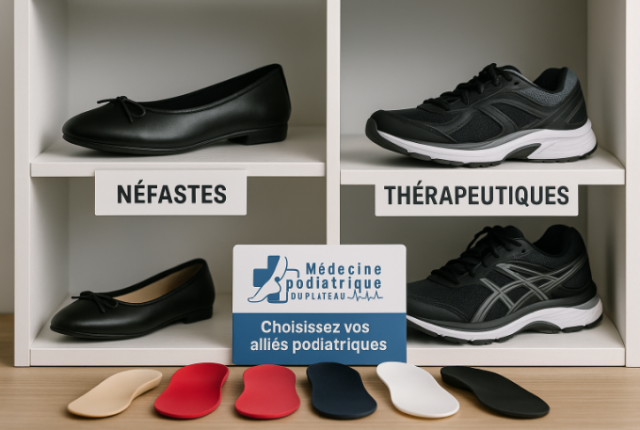
Your feet spend 8 hours trapped in your shoes every day. This seemingly innocuous choice often determines the success or failure of your recovery.
Flats are the number one enemy of your plantar fascia. Without arch support, this fabric works in constant maximum tension.
This mechanical overload perpetuates inflammation and delays natural healing. Ballerinas, espadrilles and summer shoes are particularly harmful.
The ideal therapeutic shoe combines several specific biomechanical characteristics. A slightly raised heel reduces strain on your fascia.
A stiff sole that does not bend easily prevents excessive bending of the forefoot. This rigidity protects your fascia from repeated stretching.
Arch support remains the most crucial element. This area must be firmly held to relieve your fascia of its constraints.
Cushioning in the heel absorbs the shock of walking. With each step, your heel supports two to three times your body weight.
Insufficient cushioning transmits these impacts entirely to your fascia. This daily repetition maintains chronic inflammation.
The gradual transition to better shoes avoids painful adaptations. Gradually increase the wear time over two weeks.
Your foot requires a period of adaptation to this new support. A sudden transition can temporarily make your discomfort worse.
Custom-made foot orthotics represent the logical evolution for resistant cases. These medical devices correct your specific biomechanical imbalances.
Never neglect to wear shoes as soon as you get up. This simple habit can drastically reduce the pain of the first morning step.
When technology revolutionizes your diagnosis
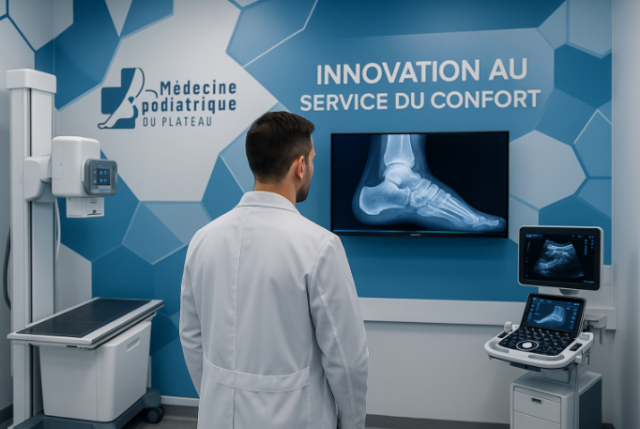
Despite the rigorous application of domestic techniques, some pains resist and require an advanced professional approach. Acknowledging this moment avoids chronicizing the problem.
At Médecine podiatrique du Plateau, we have state-of-the-art diagnostic equipment to quickly relieve heel pain. Our on-site digital X-ray immediately visualizes the bone structures.
This technology detects heel spurs, stress fractures or architectural anomalies. Crucial information obtained in minutes.
Musculoskeletal ultrasound is revolutionizing soft tissue evaluation. This dynamic imaging visualizes your plantar fascia in real-time.
We precisely measure its thickness, identify areas of inflammation and assess its vascularization. These data guide our treatment decisions.
Computer-aided gait analysis is our most advanced innovation. This system combines pressure mats and high-speed cameras.
This biomechanical assessment identifies the imbalances responsible for your pain. It also guides the design of perfectly customized orthotics.
The Class IV laser, approved by Health Canada, offers a revolutionary non-invasive therapy. These sessions stimulate circulation and accelerate tissue repair.
Injectable bleomycin to treat plantar warts is a unique service in our region. This therapy, which is not available in Ontario, regularly attracts patients from Ottawa.
Our podiatric emergency department is transforming the management of acute pain. Rather than waiting in the hospital emergency room, our patients get a diagnosis in less than 3 hours.
Plantar orthotics manufactured on site guarantee a delivery time of only 2 to 3 weeks. This speed avoids the installation of painful compensations.
Essential Questions for Rapid Heel Pain
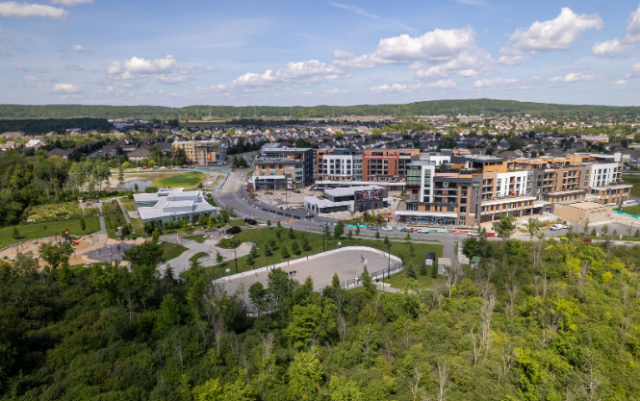
How long does plantar fasciitis last without treatment?
Without proper intervention, this condition often persists for several months, sometimes years. With appropriate care to quickly relieve heel pain, 90% of patients regain their comfort within 6 to 12 weeks.
Can I maintain my sports activities?
The exercise must be adapted according to the intensity of pain. Swimming and cycling are generally tolerated. Temporarily avoid impact sports until significantly improved.
Are anti-inflammatories really effective?
These medications provide temporary relief but do not treat the underlying biomechanical cause. Prolonged use of these can mask red flags.
Should you absolutely avoid walking barefoot?
Absolutely. Even at home, wear shoes with arch support. This simple habit significantly reduces painful recurrences.
Heel pain may seem benign, but it deserves serious attention to avoid chronicization. The scientifically validated techniques we have explored offer you concrete solutions today.
If your pain persists despite these measures, consult a doctor immediately. Our Plateau podiatric medicine team welcomes you to our ultramodern AGORA clinic in Gatineau.
Our state-of-the-art technologies ensure accurate diagnosis and effective treatments to quickly relieve heel pain.
Make an appointment at 819 800-1212


